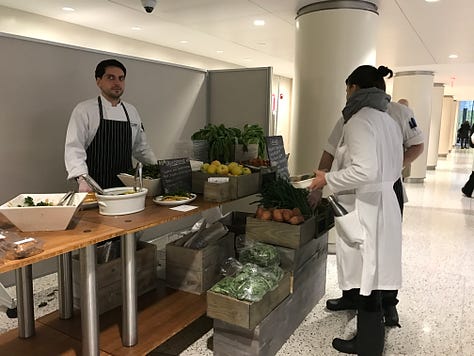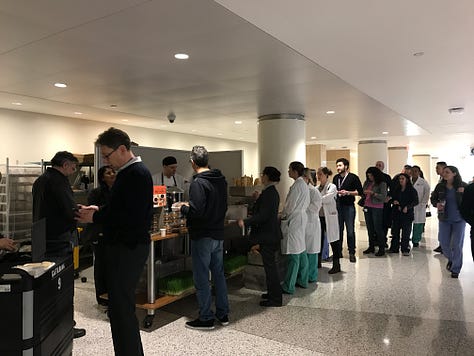Lunchables Pulls Out: Why This Matters
Good news: Lunchables have been pulled from school lunch programs due to low demand. But why was demand so low, and what does this mean for the bigger picture?
Let’s break it down.
Lunchables designed for schools are different from those sold at supermarkets. Consumer Reports has found lead and excessive sodium in the supermarket versions—yikes! 🚩 The FDA doesn’t have strong nutrition regulations - for example, there are no federal limits for heavy metals in most foods (and that desperately needs to change). Even with such minimal regulations, Lunchables for schools had to tweak their recipes to make them “healthier” in order to meet the baseline federal standards.

🚩But here’s the catch: even the “healthier” school versions aren’t exactly nutritious. For example, they pack nearly 50% of a child’s recommended daily sodium intake in a single serving. Excess sodium can lead to high blood pressure in kids and teens, putting them at risk for heart disease later in life.
And let’s be honest: the reformulated school Lunchables probably don’t taste great. My guess? Without the artificial ingredients and flavor enhancers found in the supermarket version, the poor-quality base ingredients are left to fend for themselves—resulting in a cardboard-like taste. That’s just my opinion, but the fact remains: if food is at such a low price, it’s using low quality processed ingredients, and will therefore lack flavor or nutrients.
What’s the Alternative?
High-quality school meals are possible. Take France, for example. French school lunches are renowned for being made from scratch with fresh, sustainably grown ingredients. Here’s a real menu from October 3, 2013:
Salad: Cauliflower with vinaigrette
Main: Hachis Parmentier (think Shepherd’s Pie) with organic beef
Cheese/Dairy: Pyrénées cheese with organic baguette
Dessert: Fruit salad
If French kids can enjoy meals like this, why can’t American kids? Schools should be feeding children real, nourishing food—not highly processed meals loaded with toxins. Even if you’re looking at pre-packed options, the Oscar Mayer snack pack has 10% allowable dose level of led and 36% daily intake of sodium vs to Heinz Lunchable which is 74% allowable dose level of led and 49% daily intake of sodium.
In my opinion, I also think using fresh, local, real ingredients in school kitchens would not only enhance the experience for students but also for the kitchen staff. At Local Roots, we provide organic, local veggies to NYU Langone Hospital which they turn into a Friday lunch and sell at a farmers market. Their kitchen team told me how excited they are every week to see what different, seasonal ingredients are coming and how beautiful it is to cut open a watermelon radish or smell the fresh herbs.



🚩 Why Does This Matter?
Food affects everything: our bodies, our gut health, even our mental health. Filling kids’ plates with high-sodium, low-quality meals sets them up for long-term health challenges.
We, as consumers, need to demand better. Stop buying food filled with toxins. Hold food companies accountable for creating healthier options. And pressure the FDA to step up and regulate the unhealthy ingredients that flood our grocery aisles.
We deserve better.




